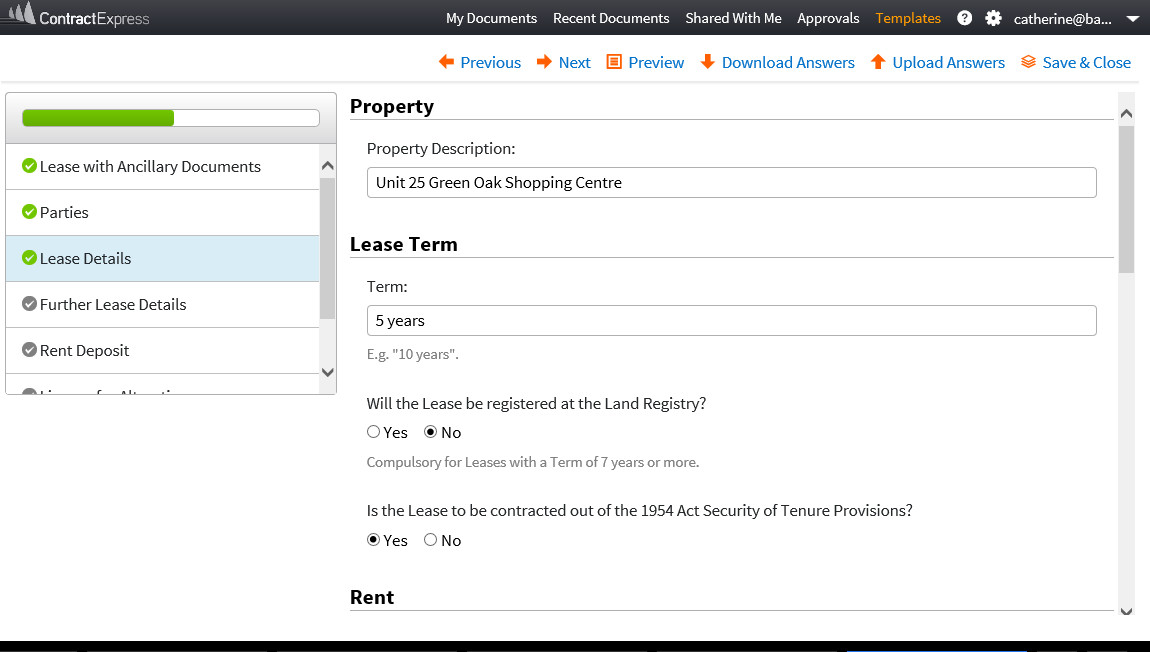“On average, lawyers spend 60 per cent of their time drafting documents. If there is a tool that allows them to do that faster and better, then it is an obvious choice.”
Thomson Reuters / Catherine Bamford
…
Catherine Bamford is a UK real estate lawyer (solicitor) who entered the legal industry by practicing with one of London’s most prominent law firms (Pinsent Masons LLP).
An assignment to make Pinsent Masons’ real estate practice “more efficient using automation technology” led to her becoming a “legal engineer” — as defined here at page 25:
“An individual with a hybrid skill set that can translate legal knowledge, processes and technology into commercial solutions“.
…
Bamford describes* “Legal Document Automation” by first explaining how the status quo works:
” … Let’s start with the way lawyers currently draft legal documents by taking a real life example.
“A landlord client calls his lawyer and tells her he has found a new tenant for a retail unit. The tenant is going to be carrying out some alterations and also paying a rent deposit.
“The lawyer will generally go onto her firm’s intranet and find a precedent (template) Lease [and related specified documents for this kind of transaction under English law and tax rules]. If her [law] firm has recently gone through a few mergers or has made a lot of lateral hires [new lawyers coming in from other firms], it is possible they do not have an agreed firm precedent and she may even take her favorite templates out of her drawer or worse find one she has recently completed on a similar matter ….
“The lawyer will then print out the precedents and mark each document up by hand, adding details like the parties’ names to the front page, the top of page one and the execution clauses of each of the three documents. She will insert the property address in 5 or 6 places, as well as adding or amending definitions and clauses to reflect the agreement in relation to assignments, alterations, [and other terms specific to English law and taxation].
“The drafting times will vary from deal to deal, but on average the time recorded [for the lawyer’s work] will look something like this:
- Lease 36 minutes
- License for Alterations 24 minutes
- Rent Deposit Deed 18 minutes
- Contracting Out Notice and Declaration 12 minutes
“Total time recorded = 1 hour 30 minutes.”
…
Non-automated status quo: 90 minutes
…
Bamford contrasts* the non-automated status quo with Legal Document Automation:
“Legal Document Automation, on the other hand, means that the templates will have been ‘automated’ using document automation software. The lawyer will instead click on the law firm’s intranet to open an online questionnaire, in this case, entitled Lease Suite – Retail Unit:
“The lawyer will work through the online questionnaire inserting details like the parties’ names only once, and selecting or inserting answers to questions such as ‘Is the Tenant paying a rent deposit?’, if so, ‘How much is the Rent Deposit?’, ‘Is the Tenant carrying out any alterations that require Landlord’s consent?’ and so on. Questions are only asked if relevant based on the answers to previous questions.
“In 20 to 30 minutes at most, the lawyer completes the questionnaire and they are presented with the draft Lease [and related documents required under English law and tax rules] ….”
…
Non-automated status quo: 90 minutes.
Vs
Legal Document Automation: 20 to 30 minutes max.
* See, https://www.linkedin.com/pulse/what-legal-document-automation-catherine-bamford.
 Managing Legal
Managing Legal



